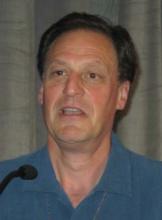The Food and Drug Administration approval of Hemangeol, a pediatric formulation of propranolol, should reduce the potential for error in increment dosing conversions when treating proliferating infantile hemangiomas that require systemic therapy, according to Dr. Adelaide A. Hebert.
"This represents a real milestone in therapy for patients who have hemangiomas," Dr. Hebert, professor and director of pediatric dermatology at the University of Texas Health Science Center at Houston, said in an interview. "It’s a wonderful step forward for all of us who care for children in the earliest months of life."
Pediatric dermatologists have been using generic propranolol to treat infantile hemangioma for several years. In doing so, "I as well as other pediatric dermatologists have found occasionally that the pharmacist was not as mindful as I wished them to be," said Dr. Hebert, who said that to date she does not have clinical experience with Hemangeol. "There were conversions that were not accurate in the dosing, so the patient occasionally got too much medicine or too little medicine. It was a human error. We picked up on these. With this new medicine, we won’t have that problem. It’s my understanding that [Hemangeol] will go through a specialty pharmacy. It will come with a special syringe to measure how much [drug you’re using]. There’s only one concentration, so I believe that the risk of error will be reduced."
In pivotal, randomized, placebo-controlled multicenter trials, researchers compared four Hemangeol treatment protocols (1 or 3 mg/kg per day for 3 or 6 months) versus placebo in an effort to reach the primary endpoint: complete or nearly complete resolution of the target hemangioma.
In a cohort of 456 infants aged 5 weeks to 5 months with a proliferative infantile hemangioma that required systemic treatment, the investigators found that the treatment dose of 3 mg/kg per day for 6 months had a 60.4% success rate, compared with 3.6% in the placebo group (P less than .0001). They also found that 11.4% of patients required retreatment after initial Hemangeol treatment was stopped.
"It’s unique when we have a situation where we have a drug that was available off label but then gets approved as a new medication," said Dr. Lawrence F. Eichenfield, chief of pediatric and adolescent dermatology at Rady Children’s Hospital, San Diego, which served as one of the Hemangeol study sites. "Propranolol for the treatment of hemangiomas is both a fascinating story and a tremendous breakthrough. The observation was that propranolol was incredibly effective at minimizing the growth and/or shrinking down the blood vessel tumors. This drug approval reflects a very large effort to study both the utility and safety of the drug."
In clinical trials, the most commonly reported adverse events among treated infants were sleep disorders; aggravated respiratory tract infections such as bronchitis and bronchiolitis associated with cough and fever; diarrhea; and vomiting. Adverse reactions resulted in treatment being stopped in less than 2% of treated patients.
"The FDA has been more conservative in recent years, so to get a drug that’s available and approved for small children is an enormous accomplishment," Dr. Hebert said. "It acknowledges that this is a significant part of health care in this pediatric population. I think each of us feels even more comfortable using a medicine specifically designed to meet this unmet need. The greatest challenge will be not the efficacy of the medicine, but difficulty getting it through [health] insurance [plans]."
Hemangeol is expected to be available in June 2014 and is marketed by Pierre Fabre Dermatologie in Castres, France. Dr. Eichenfield reported having served as a clinical investigator for, and/or consultant to, Pierre Fabre. Dr. Hebert disclosed that she has received one honorarium from Pierre Fabre for a single advisory board.


